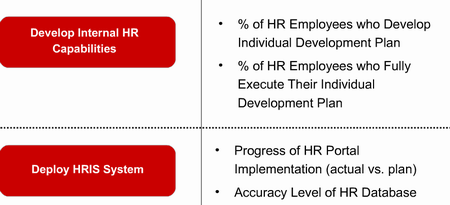The work of any human resource department can be notably facilitated through the introduction of special measurement tools that make it possible to analyze the performance of the whole company and efficacy of the HR department in particular. These tools are known as human resource metrics and are specially worked out to provide important information and detailed analysis of staff-related issues. The main purpose of implementing these indicators is to provide a reliable framework for analyzing and monitoring specific data associated with the company’s personnel. Key performance indicators also help set standards for proper measurement of HR performance and timely identification of strategies that help the company’s managers plan and reach the targeted business objectives.

Human resource metrics are designed on the basis of special data associated with the company’s workforce and their productivity. This information helps get the idea of all staff-related changes that have happened during the analyzed period of time as well as corresponding consequences. The most significant key performance indicators that should be considered by any human resource department are the rate of turnover, sickness levels, retention and recruitment, personnel engagement and training etc.

Turnover rate is important for any organization, since it shows how effective and correct the process of personnel recruitment was. High rates of personnel turnover generally lead to the increased financial expenditures. This is because there is a need to replace the employees and introduce other related changes. This indicator is calculated by means of dividing the overall amount of leaves during the analyzed time interval by the real staff amount. It is quite understandable that the lower the rate of turnover is, the more efficient the performance of the HR department proves to be. Consequently, this should be one of the main goals of each company.
Let us proceed to sickness levels now. It is of paramount importance for any organization to monitor and manage this indicator accurately, because the results are closely connected with the company’s expenses. Apart from this, sickness absence rates affect both the client’s care continuity and the overall morale of employees. This is especially true when sickness levels are quite high.
As you see, the processes of monitoring and tracing all the changes that are going on in your company are not too painstaking and time-consuming if you use choose and implement human resource metrics accurately and with regard to your current needs. If you manage to use this measurement strategy correctly, the results will come in due time.